Editor’s note: This article was originally published in May 2013. Updated April 2022.
Puffball mushrooms (Genus: Calvatia, Bovista, and others) are a fantastic wild edible. With a little examination, they have easily identifiable characteristics and they’re a common find in many meadows and forests. However, they do have some extremely poisonous look-a-likes to be wary of, namely young destroying angel and death cap mushrooms. Puffball mushrooms fall into a number of genera, most of which are small, at roughly 3” and below. However, there is one giant puffball (Calvatia gigantea) that can grow up to one foot in diameter and is edible.
How to safely identify Puffball mushrooms
There is thankfully one major characteristic that will help you tell the puffball mushroom apart from its poisonous look-a-likes. The best way to check if you have a puffball is to cut the mushroom in half from the top of the cap to the bottom. The inside of edible puffball mushrooms should be solid and pure white, like a marshmallow, or fresh mozzarella balls. There should be no patterning, marks or colors inside, or anything other than pure white, and especially no signs of gills. If there are any gills present, then it isn’t a puffball mushroom.
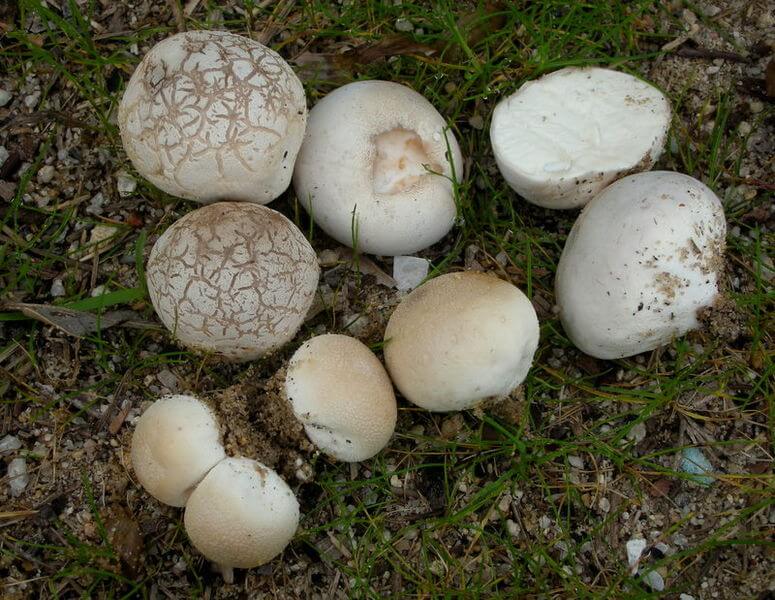
If you follow this one rule you should be able to enjoy mushroom hunting for puffball mushrooms without worry. It is, however, important to remember that not all puffballs are edible, and not all are edible at each stage of growth. The warted Puffball Mushroom (Lycoperdon pyrforme) for example is only edible when young, before the caps become brown. But if you stick with the rule of pure white inside with no markings(especially gills) then you will only be eating edible puffballs. When foraging, it’s always important to proceed with caution and follow safe foraging guidelines.
If you’re unable to source your own local supply, you can buy spores for edible puffballs online. These species are synonymous with the giant puffball (Calvatia gigantea) but are referred to by a different scientific name.
Edibility and culinary use of Puffball mushrooms
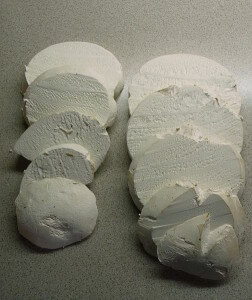
Puffballs have a mild mushroomy taste that some people describe as earthy. They can be used in endless recipes in place of your usual shop-bought mushrooms, plus they can also replace eggplant. The texture is a bit like tofu, so they’re a great addition to a stir fry or even as a meat alternative in burgers. Make sure to cook them before eating. Roasted, baked, boiled, or fried in butter are all common ways to eat this mushroom. Although it is possible to freeze or dry them, they are best when eaten shortly after picking. They can spoil quickly, which is likely why they are not a popular grocery item.
See our breaded puffball mushroom recipe for one way to prepare them. Washing the interior of the mushroom is not a good idea since it will soak up water like a sponge and become soggy, if you are worried about dirt or germs you can remove the skin from the mushrooms instead.
Are Puffball mushrooms nutritious?
The nutritional and health benefits of many wild foods are understudied, but there is one important possible health benefit to eating puffballs. In the genus Calvatia there is a chemical called calvacin. This compound is now being studied as a potential anticancer drug because of its antitumor properties. The studies are still ongoing and there have not been any huge breakthroughs, but current evidence suggests it could possibly prevent tumors when taken on a regular basis.
Puffball mushroom lookalikes and cautions
The primary caution of this fungus is to make sure it is identified correctly. If you accidentally eat a mushroom in the Amanita genus, especially destroying angel (Amanita bisporigera, ocreata, or virosa) or death cap (Amanita phalloides), then you risk becoming fatally ill. The Amanita genus is responsible for most fatal foraging accidents caused by fungi.
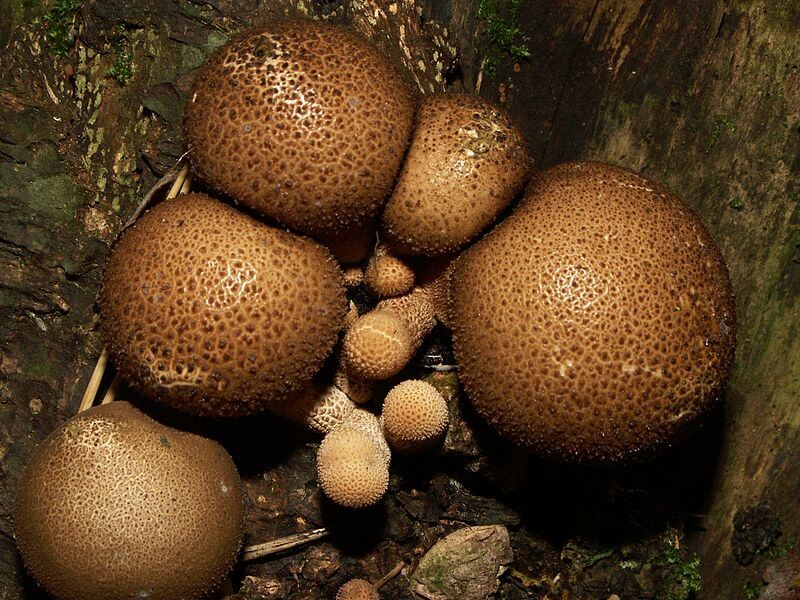
However, by ensuring the mushroom is pure white inside when cut in half, you should avoid these toxic lookalikes. This rule is universally accepted in the foraging world, and it will keep you safe. Remember to always follow general safe foraging guidelines when foraging in the wild. Rare allergic reactions have been reported and are usually minor, so always eat a small portion of any new food and wait before indulging in large quantities.
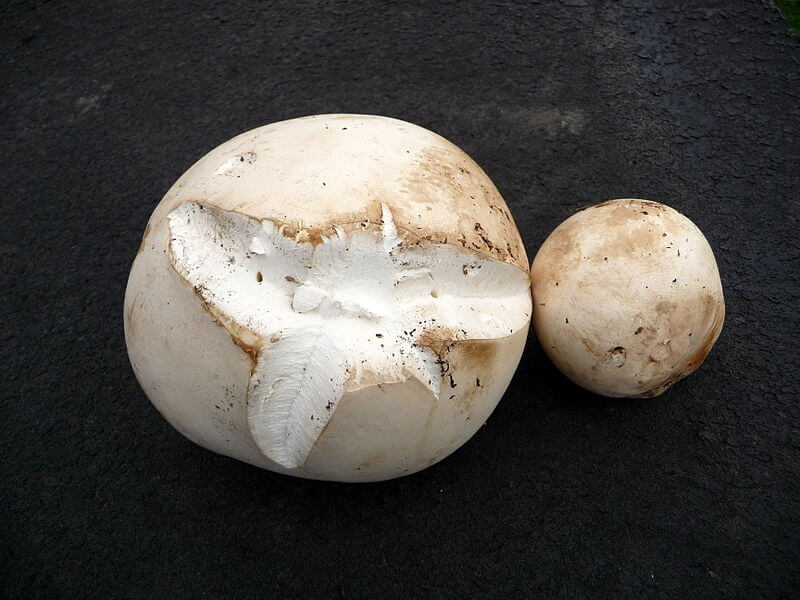
Conclusion
The puffball mushroom is perfect for mushroom hunting, especially the giant puffball because it is the easiest to identify. It has a mild flavor and a familiar texture and it can be cooked and added to many types of dishes. So with one identification rule to follow this can be a great wild edible to add to your list.
Many of our readers find that subscribing to Eat The Planet is the best way to make sure they don't miss any of our valuable information about wild edibles.
See our privacy policy for more information about ads on this site

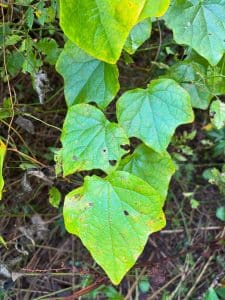
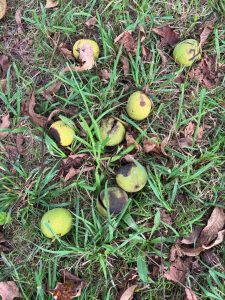
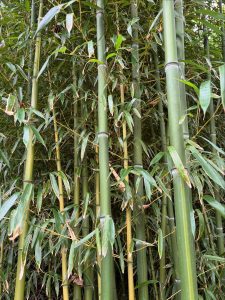
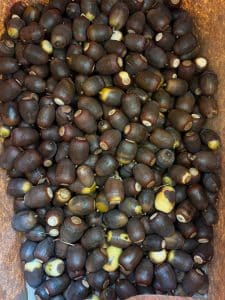
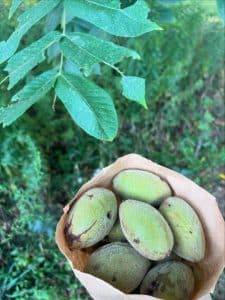
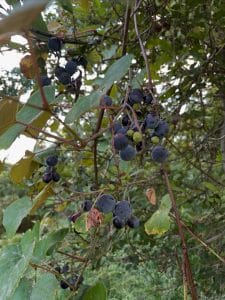
18 Responses
I’d love to send a photo for correct identification.
Can you provide links to the studies that show “Calvacin…is known to prevent tumors when taken on a regular basis”? I couldn’t find anything online beyond some early studies from the ’60s on animals (and there seemed to be some pretty nasty side effects), and something published in Mongolia from 2011.
Here is one summary of a study that states that calvacin has antitumor properties. It then goes on to state all the risks associated with high doses of isolated calvacin. Thats one reason I mention in the article that there haven’t been any breakthroughs in developing an effective anticancer drug. There are some promising properties but they have some issues to work out still.
http://cancerres.aacrjournals.org/content/23/7_Part_1/1036
While walking along a road near my house, I spotted a large puffball mushroom. I picked it up, brought it home and sliced it up, keeping most of it in Tupperware, and fried a very small portion in Olive oil with pepper. And it was delicious!
It’s early July in Sonoma Cty CA. Found what looked like the brown puffball you picture and caption as being edible in its young stage. Following your advice to cut in half in hopes of seeing
“marshmallow white” interior I found black speckles on a dark, almost purplish, interior. Tossed it in landfill can and washed the hell out of my hands and knife. What could it have been?
It was likely something similar to poison pigskin puffball(Scleroderma citrinum)
“landfill can” ?
this was likely a poisonous earthball mushroom. you did well to throw it away.
Caution eating giant puffball.
DO NOT drink alcohol with this meal. Severe reaction may ensue ie losing consciousness for a short while. Have experienced it myself.
I fried a couple of small slices of the mushroom last night. They were delicious. But I had a glass of wine before I ate it. I felt nauseous all night and still feel sick to my stomach this morning. I think I maybe should try to throw up so I feel better. Or will it pass once it’s digested? Any thoughts? PS: I threw the rest of it away this morning. Let me know. Thank you.
I dried a giant puff ball. Some of the pieces turned a little brown after they dried. Are they still safe to eat?would love to leave a picture of the size but it’s not giving me that option.
My son picked what looks like a puffball mushroom today in our lawn. Its 3 inches in diameter and almost perfectly round, but with an indent on one side. When cutting through the center, it was completely solid but with a green spot just underneath the skin on top. Is it safe?
Are they safe for dogs have a yard full of them
I JUST OPENED A GIANT PUFFBALL AND ATE A SLICE (VERY GOOD!) I LIVE ALONE AND IT’S TOO BIG FOR ME TO CONSUME QUICKLY. HOW LONG CAN IT LAST? WHAT CAN I DO TO PRESERVE IT?
Puffballs don’t last long, even in the fridge. I’ve had them go to spoor within an hour of picking. Cooking them stops this from happening, and they can be refrigerated for a couple days after. I usually fry them in butter as soon as possible after picking, and freeze whatever I’m not going to eat on the spot.
I would really like to know if they will make my dogs sick.
I now live in northeast Ohio and have allot of mushrooms growing in my yard. I don’t let my dogs eat them but thought it might be a kinda treat for them if they could.
This was nice finding. Too bad can not add picture. About 8 to 9 inches in diameter, just beginning to crack on the outer skin. Snow-white inside, 2 middle cuts were bigger than my hand.
Sautéed in olive oil, garlic and white vine.
Going for a walk at Winchelsea in East Sussex, I came across a giant puffball. It was about 30 inches in diameter and a bit ragged. I thought I’ll get that on the way back but unfortunately someone saw me and made off with it. There were always a lot to be found all over the SSSI between Pett Level and Winchelsea at one time and then there were none, Horse mushrooms too, but I think the early birds were there and the edible ones got over picked. Never take everything!